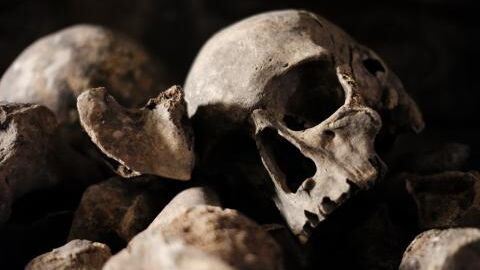Why give time to time, when you can deal with a problem right now? This is surely the mindset that animated the Magdalenian cultures of Western Europe in the Upper Paleolithic period. Instead of waiting for the bodies of the deceased to decompose, they adopted cannibalism as a funerary practice.
Discover our latest podcast
When cannibalism was the norm
A study published in the scientific journal Quaternary Science Reviews has made this astonishing discovery. 15,000 years ago, in Western Europe during the Upper Paleolithic period, cannibalism was a common burial practice. To arrive at this astonishing conclusion, archaeologists based themselves on human remains recovered from over twenty sites related to Magdalenian cultures. These sites are located in France, northern Spain, Germany and Belgium.
The famous Gough cave, in Somerset, England, is one such site. In the heart of the cave, many telling discoveries have been made. Human skulls, for example, were used as drinking cups. And most of the bones recovered showed clear signs of mastication. What the experts have discovered is that these manipulations of remains were not done out of necessity, as in the face of a need to feed, but as part of funerary rites. Silvia Bello, a specialist in the evolution of human behavior at London's Natural History Museum, said:
Instead of burying their dead, these civilizations ate them. This cannibalism was practised in north-western Europe for a short period of time. This practice was part of a widespread funerary behavior among Magdalenian cultures.
Really interesting paper by William Marsh & @SilviaBello14 on #Magdalenian#funerary practices
— Marta @MartaMLahr (@MartMLahr) October 7, 2023
Cannibalism and burial in the late Upper Palaeolithic: Combining archaeological and genetic evidence https://t.co/x99j26DZqSpic.twitter.com/x8qNuWRHok
Read more:Ancient skeleton with amputated leg may well challenge the history of medicine
Why has this practice been discontinued?
The Magdalenian culture, which lasted from 17,000 to 12,000 BC, was characterized by a nomadic lifestyle. These people, who hunted reindeer, horses and bison, travelled by following the herds. They are also renowned for their cave art, notably the paintings in the Lascaux and Altamira caves. And now, for consuming their dead.
The practice declined in importance as a result of migratory movements. In particular, the Epigravettians moved north from Central and Southern Europe. These people were accustomed to burying their dead in sepulchres, with funeral trousseaux. This practice then spread widely across Europe, and contributed to the abandonment of funerary cannibalism.
Magdalenian Cannibalism & Skull Cups?
— Stone Age Herbalist (@Paracelsus1092) May 15, 2022
Evidence for cannibalism and modification of the head during the Magdalenian is greater than almost any other time in the Palaeolithic. Why? pic.twitter.com/MwiuJqgxyj
Read more:Skeletal remains of a 'vampire' woman from the 17th century discovered (PHOTO)
This article has been translated from Gentside FR.
Sources used:
Natural History Museum: The cannibals of Gough's Cave















